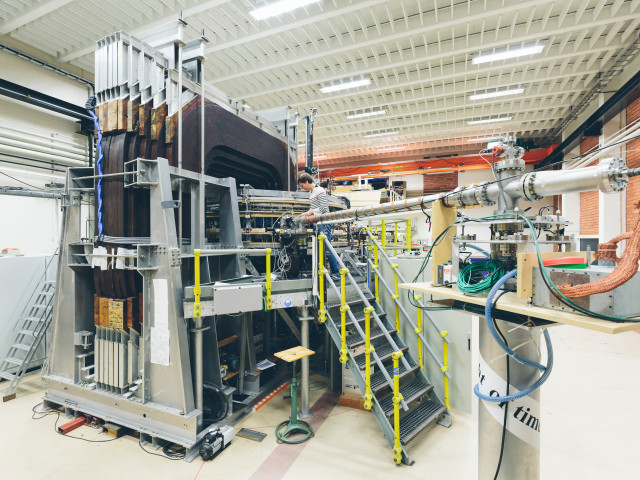1. Physics of breeding
2. Safety parameters in fast neutron systems
3. Liquid metal and gas coolants
4. Fuels for fast reactors
5. Radiation damage in fast neutron spectra
6. Core design

Choose semester and course offering to see current information and more about the course, such as course syllabus, study period, and application information.
Please note: all information from the Course syllabus is available on this page in an accessible format.
Course syllabus SH2613 (Spring 2020–)1. Physics of breeding
2. Safety parameters in fast neutron systems
3. Liquid metal and gas coolants
4. Fuels for fast reactors
5. Radiation damage in fast neutron spectra
6. Core design
The production of commercial nuclear power today is dependent on the availability of U-235, the only fissile nuclide naturally present on earth. Once the easily accessible resources of U-235 become exhausted, a transition to reactors capable of breeding their own fissile fuel from U-238 may become economically feasible. Breeder reactors of "Generation IV"-design, would besides plutonium, also recycle minor actinides, in order to reduce the long-term radio-toxic inventory sent to geological repositories. Another Generation IV-objective is the operation at high temperature, leading to better conversion efficiency, thus compensating for the higher maintenance and fuel costs of these systems. After this course, you will be able to make design choices that makes Generation IV reactors sustainable, safe and reasonably economical. This objective is achieved if you show that you are able to
An intrinsic objective of the course is to achieve skills necessary for working as a scientist or engineer. The main assignment is therefore formulated as a project/research task, which will be presented in the form of a conference paper.The objective is accomplished if you show that you are able to
Passing the course typically means that you have attended 20 hours of meetings, and performed 140 hours of work in your office. Most effort is thus to be done out of class.
At least 120 credits in engineering and natural sciences and knowledge of English B or equivalent.
Recommended Prerequisites: Completed course in reactor physics (eg SH2600) or equivalent knowledge.
Based on recommendation from KTH’s coordinator for disabilities, the examiner will decide how to adapt an examination for students with documented disability.
The examiner may apply another examination format when re-examining individual students.
If the course is discontinued, students may request to be examined during the following two academic years.
The examiner, in consultation with the KTH Disability Coordinator (Funka), decides on any adapted examination for students with documented permanent impairment. The examiner may grant another examination form for reexamination of single students.
To pass the course you should actively participate in all course meetings. In-between lecture meetings, the result of home assignments will be presented and discussed at special course meetings. If you cannot attend a meeting, report this in advance, and you will be given an extra written assignment to replace the meeting you missed.
1. Calculation of cross sections for different coolants.
2. Calculation of neutronic safety parameters.
3. Calculation of coolant, clad and fuel temperatures.
You are further required to have participated in writing and presenting a conference report with the title "Performance and safety of a Generation IV reactor with coolant A and fuel B". The research for the report will be done in groups. The paper is to be presented orally at one of the course meetings. The final examination constitutes of an individual oral exam with the teacher about the contents of the paper, lasting 30-60 minutes.